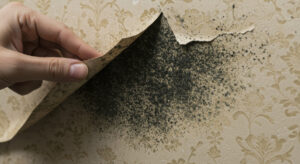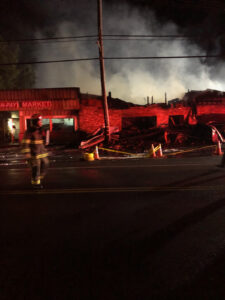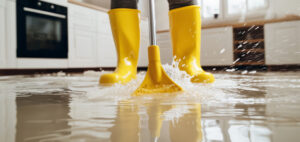West Coast Fire & Water has been in the restoration industry for over a decade. We have encountered hundreds of restoration projects and believe in the power of information. We strive to keep you informed so you can make the best decisions for you and your family when you’ve encountered a disaster!
Check out below frequently asked questions about our industry, perhaps we can help with an issue you’re having!
Water Damage
What does water damage look like?
You may have water damage if your walls are discolored and paint is peeling. We have received calls from customers who had a high utility bill or recently visited their vacation home and found warped floors and mold. Routine check ins, a camera system and house sitters are definitely recommended if you’re not going to be on your property regularly, whether it’s vacation or home, so you can act quickly.
What are the common causes of water damage? I feel like the only one that has experienced this disaster!
Believe it or not, one of the most common causes is accidently leaving on the sink or bathtub! We also encounter damage due to malfunctioning dishwasher or refrigerator water supply lines, leaking toilet lines and roof leaks after a storm. During the winter, we always anticipate broken pipes due to freezing weather and do our best to promote water damage prevention.
Won’t the water just dry on its own?
While some air is great for drying water damaged items on their own (for example, washing down a car seat with a hose and setting it out in the sun), if water has entered into multiple porous materials, it has other things to do than just sit around and wait to dry. It wants to go places! Carpet, furniture, drywall, hardwood flooring and baseboards are wonderful carriers for moisture and also create moisture traps. Improper drying can also cause more damage or miss some of that moisture which can lead to rot.
Mold Damage
How do I know if I have mold?
Although West Coast Fire & Water does clean up after mold, due to a conflict of interest and legal reasons we can’t tell you for certainty if you have mold. We would recommend you to an indoor air quality specialist or a mold testing company (they are often one in the same). Mold comes in different colors and can range from small spots to fluffy hair-like matter. Often, if it looks like mold, it is mold. No matter what it is, we can remove it!
What causes mold to grow?
Moisture and humidity, dark spaces, oxygen, and organic matter helps mold grow. Often, in homes or businesses it can be found in closets and behind furniture.
I tried using a bleach spray to clean up mold in my bathroom but nothing improved. What gives?
Bleach can only clean the surface of the area, and it will only change the color of the mold. The actual mold roots remain intact, which allows it to continue to spread.
Will the mold come back after treatment?
If conditions do not improve in the areas where mold treatment was applied, it can grow back.
What is the difference between mold and mildew?Mold is often fuzzy or has a higher profile and ranges from green to red and black. Mildew grows more flat and is made of a powder-like substance, and is not as invasive or difficult to clean as mold.
Fire Damage
Should I start cleaning right away?
We highly recommend delaying cleanup until you have called your insurance company, as well as a professional fire damage restoration company. If too much movement is present in your home after a fire, it could lead to more damage with the movement of soot throughout your home. If you are in your home after a fire, make sure to wear a mask and put on gloves before handling your belongings.
How much work can a restoration company do?
Our company can take care of smoke and soot removal, board ups, air scrubbing, ozone treatment, contents cleaning, odor removal and any demolition that needs to be completed to remove fire-affected areas. We can also contract for any electrical or plumbing work because those are services we do not provide.
Do I need to move my belongings before cleaning is done?
We can help with your belongings! Our contents cleaning service includes on site packing, off site cleaning and storage, as well as keeping track of your inventory for your insurance and peace of mind. We want you to know your belongings are safe with us.
Biohazard Damage
What are some examples of a biohazard?
A biohazard is anything that puts us at risk for illness or injury. Some examples include vandalism, blood borne pathogens and bodily fluids, animal urine and feces, deceased animals, infestations, and chemical spills.
What are some of the risks of dealing with biohazard?
You can develop a chronic illness or infection if you handle a biohazard situation improperly. Our technicians make sure to wear personal protective equipment in every biohazard cleanup project, which includes body suits, masks and gloves.
Can you dispose of the icky stuff?
Yes! Not only do we clean and disinfect biohazard areas, but any affected materials are disposed properly according to your county’s requirements.
Are there ways I can prevent some biohazards from entering my home?
Regular inspections of your home and crawlspace for infestations is highly recommended. Nobody needs those critters crawling everywhere, causing a mess. Regular cleaning of your home and pest control services can also be incredibly helpful.
Do you work with insurance for all projects?
Yes! We are happy to provide insurance companies with all necessary paperwork for the claims process. We tend to be their eyes and ears and are glad to provide any insight into a restoration project. We can also help you file a claim if it applies. Our estimate billing system is regulated by insurance companies; we are quite familiar with the terminology claims adjusters use.



